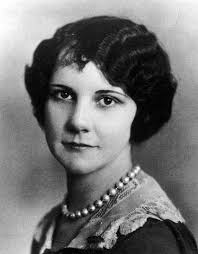If you have read my novel, Luminous, you know that Catherine Wolfe Donohue's courtroom battle against Radium Dial ended victoriously - sort of. Catherine suffered physically and mentally due to the treatment she received at the hands of her former employer and even some townsfolk who did not want to see a big employer put out of business. Her case caused radium poisoning to be recognized by the Illinois Industrial Commission as an industrial disease for which employers should be held liable. Catherine's case was decided in 1938, long after those who studied radium were aware of its harmful effects. Also after Catherine had died.
 |
| Catherine Donohue with Dr Charles Loffler |
The women who worked at US Radium Corp in New Jersey fought for recognition much like the women in Illinois did. Grace Fryer searched for an attorney who would take on her case for two years, and once she found one she convinced other women to join the lawsuit. Their case first went to court in 1928, after several dial painters at US Radium Corp had died. The causes of their deaths, like women in other areas, were attributed to diseases such as diphtheria, tuberculosis, cancer, and, embarrassingly, syphilis. It was Grace and her friends who were first referred to as Radium Girls, a term that is now familiar and used for dial painters across the country.
 |
| Grace Fryer |
Some of the debate over the women's causes of death were reasonable. Due to the way the human body absorbs radium as if it were calcium, the women experienced a wide variety of symptoms. Even for those who believed the cause was radium, it was difficult to state with certainty what one who was suffering from radium poisoning would experience. Those who suffered acute symptoms often lost their teeth, bones became brittle, and joints arthritic. Some women did not suffer as alarming early symptoms but later endured fertility problems and cancers. Anemia, sores, fatigue, weight loss and tumors were often reported.
As understanding of the variety of symptoms of radium poisoning increased, the attitudes of companies employing young women to work with radium infused paint did not change. If radium was dangerous, they were well compensated for the risk they took. Employers were not responsible for employee health, they attempted to argue.
Although few of the women who suffered radium poisoning gained much personally from their court cases, they did bring worldwide awareness to the dangers of radium. This knowledge led to protections for others in the handling of radium and other radioactive substances. Scientists working with plutonium as part of the Manhattan Project in the 1940s took strict precautions, partly due to the cases of the Radium Girls. In 1971, the Occupational Health and Safety Administration was established to ensure that what had happened to these women would not happen again.
 |
| Letter to Pearl from Argonne Laboratory, 1978 Pearl Payne Collection, LaSalle Historic Society |
However, radium was still used at Luminous Processes (the business created by owners of Radium Dial to protect assets from lawsuits) until 1978. Ottawa, Illinois, the home of Radium Dial and Luminous Processes continues to struggle with dangerous levels of radiation and elevated cancer rates, but how much worse might it be if a few working class women hadn't stood up for themselves back in the 1930s?
A monument near downtown Ottawa memorializes the dial painters who lived there, and other efforts have been made to honor their legacy. A new movie, Radium Girls, features fictional characters but closely mirrors the experiences of the New Jersey girls, including Grace Fryer. You may even recall a recent project to remember them with a modern glow-in-the-dark watch. I appreciate any efforts to ensure that history is not forgotten, especially the memory of those who sacrificed their own lives that ours might be better. But I think those working class women who believed they were blessed to obtain a well-paying job as a dial painter would be most proud of the protections that they have gained for others, even if their own names are often forgotten.



Have you seen the movie yet?
ReplyDeleteWhat a heartbreaking picture of Catherine Donahue!
It is. Unfortunately, I have not located any photos of Catherine from before she was ill.
DeleteIs the movie worth seeing?
DeleteI think so, especially if it is still free on Netflix. I would rather have seen them use real names & stick strictly to those people's story. They also attempt to squeeze in every social issue of the day rather than focusing on the dial painters, but it is still worthwhile to watch.
DeleteI think they may have used different names because of legal reasons.
DeleteBy the way, did you know the reason to use the famous disclaimer
"this book is a work of fiction- names places..."
Was from A 1930s film on the romanov family of Russia?
I am guessing you are correct, and they didn't want to mess with the legal issues in using real people's names. Plus, it allowed them to include more experiences into just a few people.
DeleteYes. This is often why writing about people from long ago is easier. No one is around still guarding the secrets of Cleopatra, Henry VIII or Charlemagne.
Delete